About Ketamine and it's Uses
Ketamine is a dissociative anesthetic that is used today for treating a range of mental health challenges when paired with therapeutic support.
- Treatment resistant depression
- Generalized anxiety disorder
- Obsessive compulsive disorder
- Post traumatic stress disorder
- Bipolar disorder depression (when stable on mood stabilizers and with cautions)
- Substance use disorders
- End-of-life fear of dying
I am trained by the Seattle-based AIMS Institute to provide ketamine-assisted psychotherapy. I support clients choosing to use ketamine as a psychotherapeutic tool by providing:
- Advance preparation for a ketamine experience administered by trained medical professionals, such as those at the AIMS Institute.
- The follow-up integration work that is essential to the longer-term healing effects of ketamine.
Ketamine is not a silver bullet that in and of itself improves mental health. It is a tool that, when paired with psychotherapy, can accelerate the healing process.
How does ketamine work?
Ketamine’s effect on the brain can induce states that alter its patterns of neuronal activity, which one may experience as a negative loop that leaves us continually depressed, traumatized or stuck in a mentally unhealthy place. Ketamine can work to disrupt this “default mode.”
At higher doses ketamine’s “psychedelic effect,” can create moments of awe, cognitive malleability or mystical transpersonal states of consciousness.
When under proper guidance ketamine often promotes an ability to reconstruct our “mental model of the world,” and create moments of opening and relief, carving a path through and forward from emotional and behavioral distress.
About ketamine
With deep roots in the plant based herbal medicines of Brazil, Peru and India, Erythinia mulunga, (the Coral tree) was used for its sedative and calming effects. In the United States herbal tincture derivatives of Eyrthinia were used to treat insomnia, hysteria, decrease high blood pressure and to normalize heart arrhythmia.
In the 1950s synthetic versions were developed, and at stronger doses, it was used as an anesthesia in veterinary medicine. Since around this time, ketamine’s psychedelic and healing properties were explored.
In 1999, ketamine was listed as A Class III non-narcotic under the US Controlled Substances Act, meaning it has a moderate to low potential for physical and psychological dependence.
Over the last 20 to 30 years, numerous studies have expanded the field of ketamine knowledge, discovering applications for a range of mental health issues, with greatest evidence for treatment-resistant depression.
Learn more specifically about its science and history here.
